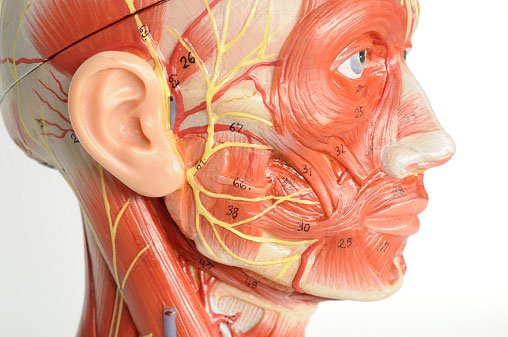What is the fastest muscle in the body? I bet 99% of people get it wrong!
Many people were completely surprised by this answer.
The fastest muscle in the body is the eye muscle.
The eye muscles are the fastest and most sensitive muscle group in the body . Thanks to these muscles, the eyes can move flexibly in all directions, even adjusting other actions of the body. For example, when you see a dangerous object rushing towards you, the eye muscles immediately send a signal for you to raise your arms to protect it.
The eye is controlled by the extraocular nerves, which are primarily responsible for movement and adjustment. The iris – the part that controls the amount of light entering the eye – works by contracting and relaxing, but its reflexes are usually slower than those of normal muscles.

The eye muscles are the fastest and most sensitive muscle group in the body.
In addition, the eyes also have the function of automatically blinking at an average rate of 15-20 times per minute. This blinking helps moisten, provide oxygen and remove dirt, ensuring the eyes are always protected.
How the eyes work
Not only is the eye a sensitive biological organ, it also performs many special functions from different perspectives.
Biologically , the eye is a delicate organ, easily affected by environmental factors. Thanks to this ability, humans can recognize and react promptly to all developments, from light, darkness to potential risks.
From an optical perspective , the eye acts as a biological camera. It captures images and colors, then converts that information into signals for the brain to process. Components such as the cornea and lens act as a lens system, focusing light onto the retina. Here, photoreceptor cells convert light into nerve signals, which are sent to the brain through the optic nerve, helping people see everything around them clearly.
Not only does it have the function of observing, eyes are also an effective non-verbal communication tool. Through eyesight, people can express emotions, signal or exchange information without using words.
The eye operates automatically and sophisticatedly, similar to a camera but without the need for manual adjustment by humans. The lens changes its curvature, the iris contracts and expands, and the pupil adjusts its size to control the focal length and amount of light entering. At the same time, the lacrimal glands work continuously to lubricate the cornea, prevent dryness and protect the eye from dust and bacteria.
- Why is myocardium the strongest muscle in the body?
- Why do we have an eye machine, a slight muscle twitch on the arm?
- 'Coping' with muscle pain
- The 'G points' help cool the body quickly in one note
- The muscle is 200 times stronger
- Soap has the risk of reducing the muscle strength of users
- This is the fastest way to swim in the world, but it is not present in competitions
- The size helps the fastest mottled leopard on land
- How dangerous thigh muscle injury?
- Opportunity to create artificial hearts for people
- Strange 16-year-old boy secretes milk as a mother
- 8 mysteries of muscles
 'Fine laughs' - Scary and painful torture in ancient times
'Fine laughs' - Scary and painful torture in ancient times The sequence of numbers 142857 of the Egyptian pyramids is known as the strangest number in the world - Why?
The sequence of numbers 142857 of the Egyptian pyramids is known as the strangest number in the world - Why? History of the iron
History of the iron What is alum?
What is alum?